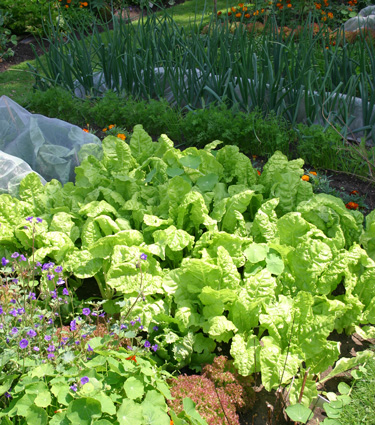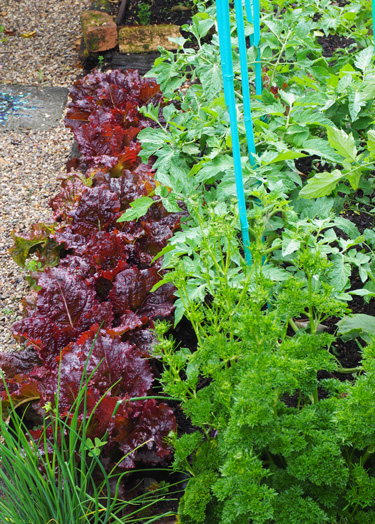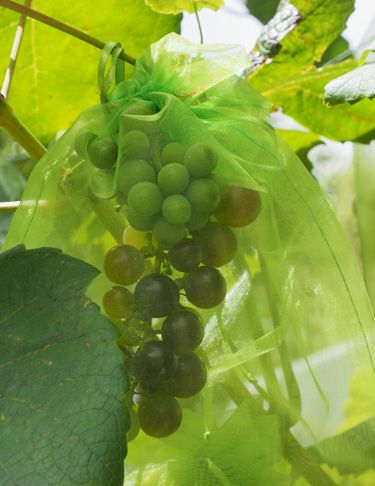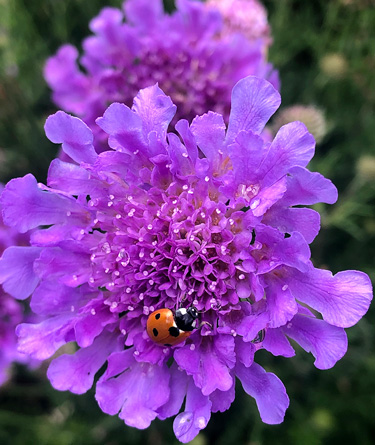Survive and thrive!
Late spring rain and warm temperatures see vegetable crops leaping into growth with lush abandon. As is right and proper in the excitement of spring, planting enthusiasm reached its heady heights and summer crops are well underway in gardens all round the country.
There’s still plenty of time for more planting. And it’s time now to focus on getting our gardens ready to face more testing times. Hotter drier weather is on the horizon with expanding pest populations too. And for those of us lucky enough to get away, our gardens must survive the holiday season. There is plenty we can do to ensure our plants continue to thrive and reward us with bountiful harvests over the coming months.
Embrace magical mulch and leave no soil uncovered. A blanket of mulch stops the baking sun stripping moisture from your soil. It insulates plant roots against temperature extremes and suppresses weeds that would otherwise compete with your plants for water.
Pea straw (or weed-free hay) is the Rolls-Royce of mulches for vege gardens. It looks good and protects and future-proofs the soil, but it can come with a Rolls-Royce price. Lawn clipping are a useful alternative when spread thinly (less than 3cm deep) so as not to form a hard impervious crust. Lawn clippings do break down very quickly so need to be reapplied often.
Trimmings from herbs and flowering perennials, and even pulled-out weeds can be laid on the ground as mulch, as long as they are free of weed seeds, diseases and pests. Newspaper and cardboard, while not the most attractive option both protect and improve soil moisture. Bark and wood chip mulches break down very slowly and are more appropriate for permanent garden beds than fro using on the vege garden. Don ’t pile mulch up against plant stems. Leave a little space for allow air movement.
How to lay mulch
- Clear weeds first, especially persistent perennial grasses.
- Apply slow release fertiliser, blood and bone or sheep pellets and water thoroughly before laying mulch.
- As an optional extra protection against weed growth lay newspaper (at least 12 sheets thick) and wet thoroughly before mulching.
- Spread mulch to an even depth of 5 - 8cm, taking care not to pile it up around stems or trunks.
- It is easiest lay mulch after, rather than before planting to avoid mixing soil with mulch.
Build soil humus. Adding compost or organic mulch builds humus in the soil. It is humus that gives topsoil its healthy dark colour and humus that holds the most water without water-logging the soil - just like a sponge. Make your own compost so you can pile it lavishly around your plants as mulch or mix it into the soil at planting time. During winter stockpile fallen leaves for the garden or compost heap.
Water the soil and roots only. Wet leaves and flowers are an invitation to disease pathogens. Update watering equipment and irrigation systems and swap watering responsibilities with friends and neighbours. Water deeply every few days rather than light watering every day. Deep watering encourages roots to grow deeper into the soil where more water is stored and your plants will become more drought resistant as a consequence. Make the most of grey water.
Feed and water, especially when fruit appears. Plants get hungry and thirsty when bearing heavy loads of rapidly swelling fruit, needing regular watering and nutritional support if they are to give their best quality and highest yields. When fruiting plants like courgettes and tomatoes suffer erratic watering, nutrient uptake can suffer, leading to deficiencies that result in a disorder called blossom end rot.
Pamper plants with seaweed. Seaweed has proven itself time and time again as a powerful tonic for all plants. More than a fertiliser, seaweed enhances a plant’s natural immune systems and because it also stimulates soil microbe activity it enhances plants ability to absorb the nutrients that are there for them in the soil, including those added by the gardener. Vegetable seedlings and other potted plants suffer less from transplanting shock when soaked in seaweed solution at planting time. The natural hormones in seaweed assist germination and promote thicker cell walls rendering plants for resistant to attack from pests and disease.
Provide shelter from strong wind. Some air movement is important for plant heath but, even when the soil is well mulched, wind will rob the moisture from soil via plants leaves. Tall crops like corn and brassicas can provide useful shelter for smaller and younger crops.
Seek afternoon shade lettuces and soft herbs such as basil, coriander and parsley. Salad greens enjoy some protection in the hottest part of the day during the summer months, provided they get some sun. Morning sun is good.
Nurture pollinators and other beneficial insects. Create a habitat to attract a diverse range of insects, plant their favourite flowers and take extra special care if spraying for pests and disease control. Read the instructions, spray at the correct time and only those plants that are infested.
Block flying pests. Bug net provides excellent protection from the likes of white butterfly caterpillars and psyllid. Choose a mesh fine enough to block the pests concerned. However, be aware that netting can also create shaded or humid conditions that can invite other pest problems. Keep watch, get to know you pests and time it well. Insect mesh will also block pollinators.
Get into the swing of things. Planting a pack of seedlings or sowing a fresh batch of seeds every few weeks ensures a continuous supply of summer salad greens. Quick crops like radishes and dwarf beans romp away when sown directly into warm summer soil. Keep up with watering and mulching for rapid and continuous growth.
| Plant In December | Sow in December | Companion plants to grow now |
| Lettuce | Rocket | Marigolds |
| Tomatoes | Radish | Nasturtium |
| Zucchini | Beans | Sage |
| Cucumber | Corn | Alyssum |
| Capsicum | Carrots | Sunflowers |
| Broccoli | Parsnip | Pyrethrum |
| Silverbeet | Swede | Chives |
| Basil | Beetroot | Rocket |
| Parsley | Spring onions | Borage |
| Chives | Phacelia |

1-Dec-2020

Silverbeet, carrots and leeks

Red lettuce, tomatoes and parsley

Grapes protected by a drawstring fine mesh bag

Scabiosa attracts insects that prey on garden pests

